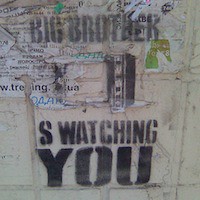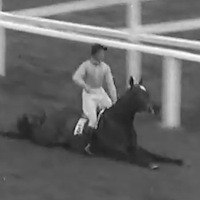The Berlin Wall is Opened after 28 Years

In 1989, November was the coldest month in East Berlin, and the 9th was freezing. The longest cold spell of the year would start the next day, plunging temperatures for a month to as low as minus 8 degrees Celcius (17F). Yet, East Berliners were outside. By 9:30 p.m., hundreds had gathered at a border-crossing point in the Berlin Wall. They demanded to get into West Berlin. The border guards didn’t know what to do.
Germany had been split since 1945, when the Allies occupied the country at the end of World War II. The American, British and French divvied up the west while the Soviets took control of the east, and the two halves became separate states in 1949. West Germany became economically successful, so East Germans began to migrate there. When their numbers increased, a barbed-wire fence went up across the country, leaving only the border in the capital city open for the eastern railway traffic. So East Germans moved to Berlin, “visiting” the west side of the city with no intention of returning.
The chill of the cold war
The East German Politburo passed a new passport law to try to curb such visits, but instead, about 20% of the population managed to flee to the West by 1961. The defectors tended to be well educated, so the country was steadily losing skilled workers such as doctors, lawyers, teachers and engineers. Hence the construction of the Berlin Wall.
It was the Politburo’s idea, but it came to symbolize the Soviet Union’s cold war with the United States. It was actually two walls, 155 kilometers (96 miles) long and built entirely on the east side, cutting off family, friends and neighbors living on the west side. The inner wall was a 3-meter-tall barrier along the streets of East Berlin. Between it and the outer wall on the West Berlin side was a border zone. This contained barbed-wire fences, anti-vehicle trenches, patrol guards with dogs, floodlights, and 302 watchtowers each staffed round-the-clock by up to five soldiers. They monitored the infamous “death strip,” where soft sand showed footprints of escape attempts.
More than 100,000 East Germans made the attempt. Only 5,000 succeeded. Border guards were instructed to shoot to stop stubborn escapees, but not necessarily “shoot to kill.” Still, according to Berlin.de, more than 600 citizens were killed or died during their escape attempts. Only on April 3, 1989, were guards finally ordered to stop using firearms.
Warming up
It would take another whole article to summarize the warming up of cold-war relations that led to the fall of the Berlin Wall. Suffice it to say that, by 1987, Soviet leader Mikhail Gorbachev had carried out significant political reforms, affecting communist regimes across Eastern Europe. The Soviets and their allies agreed to lift their citizens’ travel restrictions, and in 1989, Hungary dismantled its barbed-wire fence to Austria.
Fortunately, East Germans could vacation in Hungary every summer. When they arrived that September, their host didn’t stop them from crossing into Austria, and thus into Western Europe. Within weeks, thousands of East German refugees had arrived in West Germany. Those who stayed at home demanded democratic reforms, and by then the Politburo understood the need to reform in order to retain their power. So they ousted their long-time leader, and Egon Krenz became head of state.
A press conference foul-up
Krenz’s government then drafted new travel regulations. The process started at 9 a.m. on November 9, and by 5:30 p.m. Krenz had handed a press release to spokesman Günter Schabowski. The new rules were to take effect the next day. They allowed East Germans to acquire passports and travel anywhere, including the West. They still required people to apply for visas, but these would be granted without stringent requirements.
However, something interesting happened instead. Schabowski had just returned from vacation and missed a key meeting on the new regulations. He was completely unprepared for an international press conference – one broadcast live on TV and radio. When asked when the new law would take effect, he hesitated, leafing through his papers, and then announced: “Immediately, without delay.” He added: “Permanent exit can take place via all border-crossing points.” News tickers worldwide sprang into action.
Thus it was that by 11 p.m. on a chilly November night, border guard Harald Jäger, on duty at East Berlin’s Bornholmer Strasse, faced a massive crowd. They hadn’t received any orders, so the guards had carried out passport inspections, letting people through gradually. Now the crowd numbered in the thousands, and they were getting cross. Jäger opened the gate.
By 2 a.m., East and West Germans alike were dancing for joy on and around the Wall, and visiting each other on both sides. They started chipping away at the concrete the next day, taking souvenirs of the hated monument they had finally vanquished. It would take almost two years to demolish the Wall, although today, at the Berlin Wall Memorial established in 1998, you can see a few hundred meters of the original border. It will always be a part of Germany’s history, but it will never again divide the city.
Germany had been split since 1945, when the Allies occupied the country at the end of World War II. The American, British and French divvied up the west while the Soviets took control of the east, and the two halves became separate states in 1949. West Germany became economically successful, so East Germans began to migrate there. When their numbers increased, a barbed-wire fence went up across the country, leaving only the border in the capital city open for the eastern railway traffic. So East Germans moved to Berlin, “visiting” the west side of the city with no intention of returning.
The chill of the cold war
The East German Politburo passed a new passport law to try to curb such visits, but instead, about 20% of the population managed to flee to the West by 1961. The defectors tended to be well educated, so the country was steadily losing skilled workers such as doctors, lawyers, teachers and engineers. Hence the construction of the Berlin Wall.
It was the Politburo’s idea, but it came to symbolize the Soviet Union’s cold war with the United States. It was actually two walls, 155 kilometers (96 miles) long and built entirely on the east side, cutting off family, friends and neighbors living on the west side. The inner wall was a 3-meter-tall barrier along the streets of East Berlin. Between it and the outer wall on the West Berlin side was a border zone. This contained barbed-wire fences, anti-vehicle trenches, patrol guards with dogs, floodlights, and 302 watchtowers each staffed round-the-clock by up to five soldiers. They monitored the infamous “death strip,” where soft sand showed footprints of escape attempts.
More than 100,000 East Germans made the attempt. Only 5,000 succeeded. Border guards were instructed to shoot to stop stubborn escapees, but not necessarily “shoot to kill.” Still, according to Berlin.de, more than 600 citizens were killed or died during their escape attempts. Only on April 3, 1989, were guards finally ordered to stop using firearms.
Warming up
It would take another whole article to summarize the warming up of cold-war relations that led to the fall of the Berlin Wall. Suffice it to say that, by 1987, Soviet leader Mikhail Gorbachev had carried out significant political reforms, affecting communist regimes across Eastern Europe. The Soviets and their allies agreed to lift their citizens’ travel restrictions, and in 1989, Hungary dismantled its barbed-wire fence to Austria.
Fortunately, East Germans could vacation in Hungary every summer. When they arrived that September, their host didn’t stop them from crossing into Austria, and thus into Western Europe. Within weeks, thousands of East German refugees had arrived in West Germany. Those who stayed at home demanded democratic reforms, and by then the Politburo understood the need to reform in order to retain their power. So they ousted their long-time leader, and Egon Krenz became head of state.
A press conference foul-up
Krenz’s government then drafted new travel regulations. The process started at 9 a.m. on November 9, and by 5:30 p.m. Krenz had handed a press release to spokesman Günter Schabowski. The new rules were to take effect the next day. They allowed East Germans to acquire passports and travel anywhere, including the West. They still required people to apply for visas, but these would be granted without stringent requirements.
However, something interesting happened instead. Schabowski had just returned from vacation and missed a key meeting on the new regulations. He was completely unprepared for an international press conference – one broadcast live on TV and radio. When asked when the new law would take effect, he hesitated, leafing through his papers, and then announced: “Immediately, without delay.” He added: “Permanent exit can take place via all border-crossing points.” News tickers worldwide sprang into action.
Thus it was that by 11 p.m. on a chilly November night, border guard Harald Jäger, on duty at East Berlin’s Bornholmer Strasse, faced a massive crowd. They hadn’t received any orders, so the guards had carried out passport inspections, letting people through gradually. Now the crowd numbered in the thousands, and they were getting cross. Jäger opened the gate.
By 2 a.m., East and West Germans alike were dancing for joy on and around the Wall, and visiting each other on both sides. They started chipping away at the concrete the next day, taking souvenirs of the hated monument they had finally vanquished. It would take almost two years to demolish the Wall, although today, at the Berlin Wall Memorial established in 1998, you can see a few hundred meters of the original border. It will always be a part of Germany’s history, but it will never again divide the city.

Related Articles
Editor's Picks Articles
Top Ten Articles
Previous Features
Site Map
Content copyright © 2023 by Lane Graciano. All rights reserved.
This content was written by Lane Graciano. If you wish to use this content in any manner, you need written permission. Contact Lane Graciano for details.







